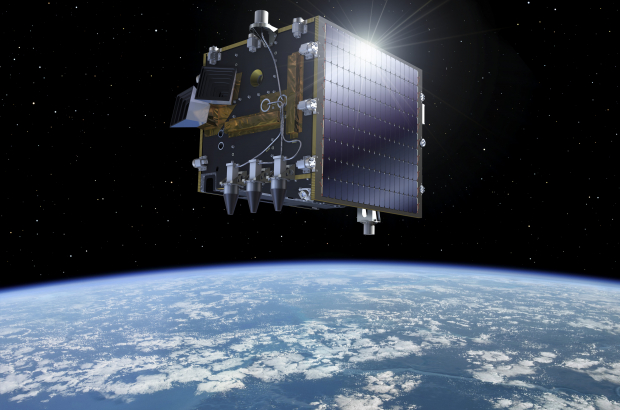- Daily & Weekly newsletters
- Buy & download The Bulletin
- Comment on our articles
Space odyssey: Liège’s Spacebel is celebrating 30 years of state-of-the-art engineering software
If the Space Age began when the Sputnik satellite was launched in 1957, then Liege-based software engineering company Spacebel has been around for just half that time. But as the company celebrates its 30th anniversary, it can claim its own role in the story of mankind’s adventures in space, thanks to its state-of-the-art IT systems that have contributed to the development of an array of satellites orbiting Earth.
Spacebel provides software for satellites and space vehicles, among other on-board software that pilots the spacecraft or payload. It was formed in 1988 by a group of Belgian shareholders and the French Matra Marconi Space – now Airbus Group – which was looking for industrial partners in European Space Agency (ESA) countries such as Belgium and Spain. Today, the shareholding is entirely Belgian, combining public authorities and private investors.
The company employs some 100 people at several locations: one third in Liège, a third in Hoeilaart, near Brussels, and the remainder in Toulouse and in its newest office in Warsaw. With a turnover of approximately €12 million in 2017, Spacebel is a key player in the European space industry. Much of its work is in Earth monitoring services: the company offers space applications to support natural resources and hazards management, spatial planning, atmosphere, agriculture, water resources, forests and land carbon management. Managing director Thierry du Pré-Werson, who joined the group a year after it was set up, says the original plan was to found a pioneering software company. “We have always wanted to develop expertise in satellite and launch control,” he says.
Spacebel’s original clients were space agencies, working on projects such as the Columbus laboratory that is part of the International Space Station (ISS), and CNES’s Hermes spaceplane. It specialises in on-board control and data handling software, simulation, control and mission centres.
To date, the company has been involved in more than 40 space missions, with its software used in Earth observation, telecommunications applications, satellite communication networks, navigation, exploration, launchers, balloons and space situational awareness. About 95% of turnover is generated from export: space agencies, prime aerospace companies, Earth observation data users and the downstream sector from the space market are among its main customers.
It helped design satellite control and mission centres for the Artemis telecommunications satellites, and the Solar and Heliospheric Observatory for the study of the Sun and comets. In 1993, Spacebel delivered control software to the European Southern Observatory for the Very Large Telescope in Chile. It was closely involved in the ESA’s Proba-1 (PRoject for On Board Autonomy) mini satellite, which was launched in 2001 and is still in operation, making it the ESA’s longest orbiting Earth observation mission.
Spacebel’s software also found its way into Pléiades, the twin French high-resolution Earth-imaging satellites launched in 2011 and 2012. And this year, the company upgraded its production facilities, opening 500m² ISO 5 & ISO 7 clean rooms in compliance with space sector standards.
The market has changed dramatically since 1988, and in recent years there has been a wave of new commercial launchers such as Elon’s Musk’s Space X and Jeff Bezos’s Blue Origin. Du Pré-Werson recognises the shift and insists Spacebel can adapt. “We don’t want to reinvent everything, but we want to use all available resources to satisfy our customers’ needs and expectations in line with the latest trends,” he says.
This article was first published in the Wab magazine


















